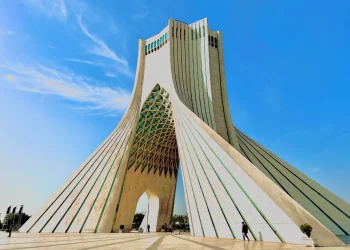When the great Francois Geurds, Heston Blumenthal’s right-hand man, opened his restaurant in Rotterdam, Najat Kaanache was clear that this kitchen hid “the magic” he was looking for. “I would go to see Geurds every Friday and every Friday he told me no, that he already had all his equipment. So, two months or so until I managed to get into his restaurant,” says the Basque-Moroccan chef from those early days. his career took off. The anecdote reflects the fighting and indefatigable spirit of this woman who today is one of the most acclaimed figures in world gastronomy.
The cook, of Moroccan parents, was born four kilometers from Orio, between Zarautz and San Sebastián, “where there was a ball court and little else.” But they call her the pilgrim chef because after spending many years in the Basque Country, Najat undertook a vital and culinary journey through countries such as the United Kingdom, Holland, the United States, Mexico and Morocco, passing through the kitchens of up to five restaurants with three Michelin stars: El Bulli (Gerona), Noma (Copenhagen), French Laundry (California), Per Se (New York) and Alinea (Chicago).
All this until he felt the call of Morocco in 2016. Specifically, the call of the medina of Fez, its colors, its flavors … it was the beginning of Nur, the restaurant of the thousand and one nights recognized as the best in Africa and the best Moroccan in the world.
Her first book, Najat, just published by Planeta Gastro, is a reflection of the chef’s powerful personality. A mosaic of recipes, stories and fascinating photographs that take the reader into the creative universe of the cook in the heart “out of nowhere”, as she says when she describes Fez, a place that “looks like something out of Star Wars”.
“I went to Fez with two suitcases. I bought the space from Stephen di Renza, creative director of Yves Saint Laurent, but I did not calculate who would come. I was three months without diners.” Luckily, the tables were filled thanks to Tock, the advance booking platform that took over the restaurant from foreigners overnight.
Nur, which means light in Arabic, is hidden in the impossible labyrinth of the medina. Before the pandemic, Najat went shopping every day through those narrow streets accompanied by a cart and her head chef. “The relationship between man and man in a market country is more pleasant,” explains the cook. Once she had seen the product, she returned to the restaurant to design the menu that she was going to serve that day.
The chef finds Moroccan colors, flavors, products and crafts and expresses them as art on a plate. Her cooking is “the expression of a natural product without looking for it too much.” For her it is important to visualize the natural colors of the earth. “In Morocco, colors express many things: they have their history behind them.”
“I do not see the kitchen as high and low,” defends Najat, a woman who speaks seven languages. “Cooking is an art way to create peace. It doesn’t matter if you have lentils or a jar of nocilla.” So when the pandemic hit, the chef did not hesitate to invent an alternative. “I set up a kitchen on the roof of the restaurant and started teaching.” Nur is now closed, but the chef is still at the foot of four other restaurants. “The future? I see it extraordinary,” she says.















